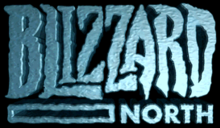
Blizzard Entertainment, Inc. is an American video game developer and publisher based in Irvine, California. A subsidiary of Activision Blizzard, the company was founded in February 1991 as Silicon & Synapse, Inc. by three graduates of the University of California, Los Angeles: Michael Morhaime, Frank Pearce and Allen Adham. The company originally concentrated on the creation of game ports for other studios' games before beginning development of their own software in 1993, with games like Rock n' Roll Racing and The Lost Vikings. In 1993, the company became Chaos Studios, Inc., and then Blizzard Entertainment soon after being acquired by distributor Davidson & Associates early in the following year. Shortly after, Blizzard released Warcraft: Orcs & Humans.
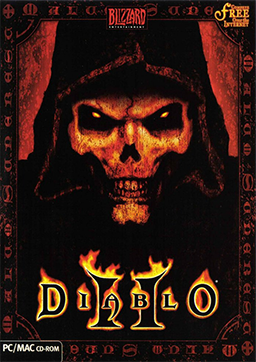
Diablo II is an action role-playing hack-and-slash video game developed by Blizzard North and published by Blizzard Entertainment in 2000 for Microsoft Windows, Classic Mac OS, and macOS. The game, with its dark fantasy and horror themes, was conceptualized and designed by David Brevik and Erich Schaefer, who, with Max Schaefer, acted as project leads on the game. The producers were Matthew Householder and Bill Roper. The game was developed over a three-year period, with a crunch time of a year and a half.

Flagship Studios was an American video game developer founded by Bill Roper along with Max Schaefer, Erich Schaefer, and David Brevik, former high level Blizzard North executives. The core personnel of Flagship Studios had been collaborating as a team since 1993 when they founded Condor Studios and in addition to creating the Diablo franchise many were key high level executives in the development of Warcraft, StarCraft and World of Warcraft games. Flagship Studios was formed following the resignation en masse of Blizzard North management following a dispute with Blizzard Entertainment parent company Vivendi regarding the potential fate of the company, development team, and titles, which were in doubt at that time. Flagship Studio's primary target platform for their games was the PC.

Michael Morhaime is an American video game developer and entrepreneur. He is the chief executive officer (CEO) and founder of Dreamhaven, located in Irvine, California. Morhaime is best known as the co-founder and the former president of Blizzard Entertainment, a subsidiary of Activision Blizzard, Inc., that was founded in 1991 as Silicon & Synapse. He served on the Vivendi Games executive committee since January 1999, when Blizzard Entertainment, Inc. became a subsidiary of Vivendi Games.

In video games, loot is the collection of items picked up by the player character that increase their power or level up their abilities, such as currency, spells, equipment and weapons. Loot is meant to reward the player for progressing in the game, and can be of superior quality to items that can be purchased. It can also be part of an upgrade system that permanently increases the player's abilities.

Michio Okamura is a computer game developer and artist. He was the lead artist for the popular computer game Diablo, and senior artist on Diablo II. He designed many of the game's characters, including the title character. He is currently the art director for Rumble Entertainment.
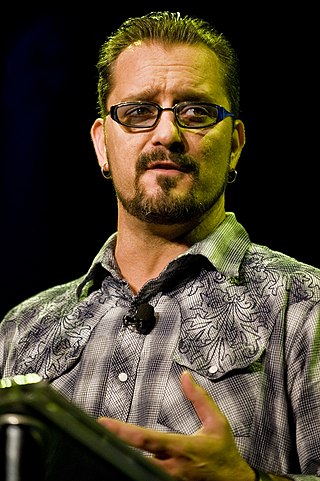
Christopher Vincent Metzen is an American game designer, artist, voice actor, and author known for his work creating the fictional universes and scripts for Blizzard Entertainment's three major award-winning media franchises: Warcraft, Diablo and StarCraft. Metzen was hired by Blizzard Entertainment as an animator and an artist; his first work for the company was with the video game Justice League Task Force.

Bill Roper is an American video game designer and producer. He is a co-founder and the current Chief Creative Officer at AuthorDigital / Arcadia Games. Previously, he was Chief Creative Officer at Improbable. Roper was Vice President/GM at Disney Interactive Studios from 2011–2016, and headed video game studios and creative and development departments for two decades, including divisions at Blizzard Entertainment, Flagship Studios, and Cryptic Studios. He is also an accomplished musician, and a founding member of the folk band The Poxy Boggards.

Matt Uelmen is an American video game music composer and sound designer. He is best known for his work in Blizzard Entertainment's Diablo series, which was recognized with the inaugural Excellence in Audio award by the IGDA in 2001. He also worked as a sound designer for the real-time strategy game StarCraft, and worked on World of Warcraft's expansion The Burning Crusade in 2007. From 2009 until the studio's closure in 2017, Matt Uelmen worked as a member of the Runic Games team, as a composer and sound designer for the Torchlight games.

Vivendi Games was an American video game publisher and holding company based in Los Angeles. It was founded in 1996 as CUC Software, the publishing subsidiary of CUC International, after the latter acquired video game companies Davidson & Associates and Sierra On-Line. Between 1997 and 2001, the company switched parents and names multiple times before ending up organized under Vivendi Universal. On July 10, 2008, Vivendi Games merged with Activision to create Activision Blizzard.
Michael Scandizzo is the president and project lead of Castaway Entertainment, a company formed out of former Blizzard North employees in 2003. He is also responsible for programming on Diablo II, the development of the Battle.net game server network, and the Quake 2 mod Loki's Minions Capture the Flag. He also created the Boat Anchor comic strip: which describes events that mirror the time he would have spent at Blizzard North and the eventual formation of Castaway.

Mark Edward Kern is a former video game executive. He worked for Blizzard Entertainment from 1997 to 2005 and was a co-founder and CEO of Red 5 Studios during the development and promotion of the video game Firefall. He is a graduate of the University of Rochester and received a law degree from the Boston University School of Law. Kern has been involved in online activism against the Stop Online Piracy Act (SOPA) and in support of Gamergate.

Activision Blizzard, Inc. is an American video game holding company based in Santa Monica, California. Activision Blizzard currently includes five business units: Activision Publishing, Blizzard Entertainment, King, Major League Gaming, and Activision Blizzard Studios.

Diablo is an action role-playing dungeon crawler video game series developed by Blizzard North and continued by Blizzard Entertainment after the North studio shut down in 2005. The series is made up of four core games: Diablo, Diablo II, Diablo III, and Diablo IV. Expansions include the third-party published Hellfire, which follows the first game; Lord of Destruction, published by Blizzard and released after the second game; and Reaper of Souls, which follows the third game. Additional content is provided through story elements explored in other media forms.

David Brevik is an American video game designer, producer and programmer who served as the co-founder and president of Blizzard North. He is best known for the critically acclaimed Diablo franchise. Currently he serves as game designer and founder of his independent studio, Graybeard Games.

Battle.net is an Internet-based online game, social networking service, digital distribution, and digital rights management platform developed by Blizzard Entertainment. The service was launched on December 31, 1996, followed a few days later with the release of Blizzard's action-role-playing video game Diablo on January 3, 1997. Battle.net was officially renamed to "Blizzard Battle.net" in August 2017, with the change being reverted in January 2021.
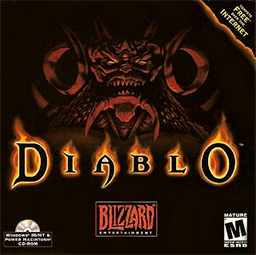
Diablo is an action role-playing video game developed by Blizzard North and released by Blizzard Entertainment in January 1997, and is the first installment in the video game series of the same name.

Gordo 106 is a 1993 platform video game developed by Tenth Planet Software and published by Atari Corporation in North America and Europe exclusively for the Atari Lynx. Set in the installations of N. Human Laboratories, players assume the role of an exploited laboratory monkey named Gordo, who unintentionally gained intelligence as a result of experimentation with radiation in order to free other animal test subjects and escape from the building, while defeating scientists and employees of the complex along the way. Its gameplay consists of platforming and exploration with a main three-button configuration.
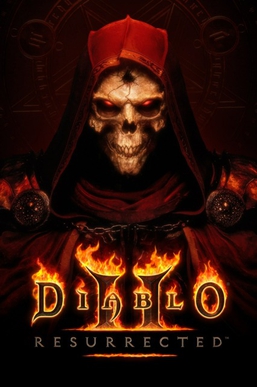
Diablo II: Resurrected is an action role-playing video game co-developed by Blizzard Entertainment and Blizzard Albany and published by Blizzard Entertainment. It is a remaster of Diablo II (2000) and its expansion Lord of Destruction (2001). The game was released for Nintendo Switch, PlayStation 4, PlayStation 5, Windows, Xbox One, and Xbox Series X and Series S on September 23, 2021.
